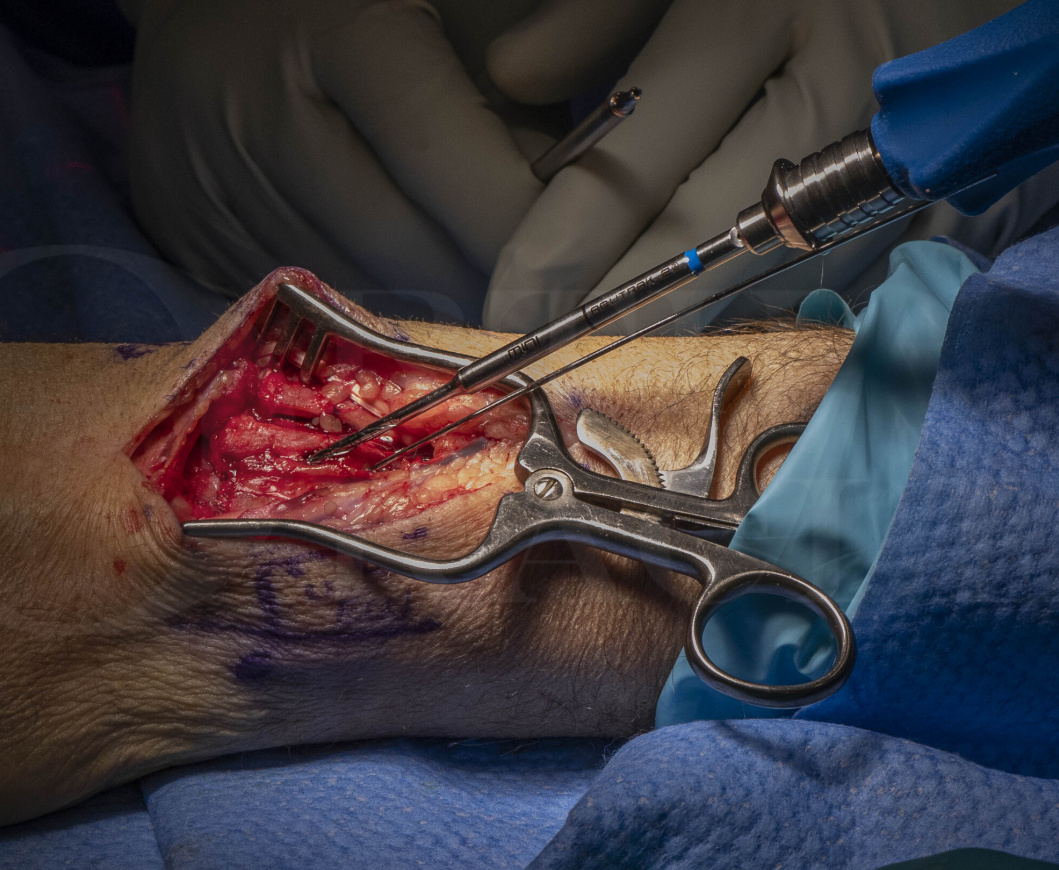Wrist fusion: Radiolunate limited fusion with Acutrak headless screw
Overview

Subscribe to get full access to this operation and the extensive Upper Limb & Hand Surgery Atlas.
Learn the Wrist fusion: Radiolunate limited fusion with Acutrak headless screw surgical technique with step by step instructions on OrthOracle. Our e-learning platform contains high resolution images and a certified CME of the Wrist fusion: Radiolunate limited fusion with Acutrak headless screw surgical procedure.
This technique demonstrates the steps involved in fusing the radiolunate joint; while this particular procedure is niche, the principles involved (confirmation of the surfaces to fuse; preparation of the joint surfaces while preserving radiocarpal length; harvesting and inserting autologous cancellous bone graft to ensure bone-to-bone apposition; stabilising the fusion interface with compression of the joint surfaces) are universally applicable to fusion operations, and can be used in many other settings.
Wrist fusion operations are good at alleviating pain from arthritis, but at the expense of reducing motion. Given the large number of bones involved in the wrist joint, depending upon the pattern of joint involvement with the arthritis, there may be the option of fusing only selected joints, so retaining some motion while improving the patient’s pain. This technique describes fusion of the radiolunate joint, a procedure that has few indications in the treatment of osteoarthritis due to this articulation usually being spared in the earlier stages of arthritis, and so often other joints will need fusing instead / as well (e.g., radioscapholunate; total wrist fusion). However, aside from the relatively rare cases of isolated radiolunate arthritis, the procedure is useful in patients with inflammatory arthritis, where fusion of the lunate to the radius provides stability to the wrist, securing the central capito-lunate joint and with it mid-carpal motion. This allows preservation of motion while improving pain (and stabilising the remainder of the proximal carpal row).
Currently, most surgeons would prefer to offer a motion-preserving biological option over either a total wrist fusion or a wrist replacement procedure, although as the outcomes of wrist replacement surgery improve, there may be a change of practice towards having a lower threshold for offering wrist replacement with the more predictable outcomes in the short to medium term that arthroplasty offers.
To be successful, arthritis should be confined to the radiolunate joint, with preservation of the radioscaphoid and mid-carpal joint surfaces. The wrist should be mechanically stable, and free from infection.
OrthOracle readers will also find the following instructional techniques of interest:
Four Corner carpal Fusion using Medartis plate and scaphoid excision
Proximal Row Carpectomy (for advanced arthritic wrist pain)
Radioscapholunate fusion using Medartis plate with distal Scaphoid excision
Total wrist fusion for Volkmann’s ischaemic contracture (Using Synthes fusion plate)
Posterior and Anterior interosseous nerve neurectomies of the wrist
Author: Chris Little FRCS(Tr & Orth)
Institution: The Nuffield Orthopaedic Centre, Oxford, UK.
Clinicians should seek clarification on whether any implant demonstrated is licensed for use in their own country.
In the USA contact: fda.gov
In the UK contact: gov.uk
In the EU contact: ema.europa.eu



















